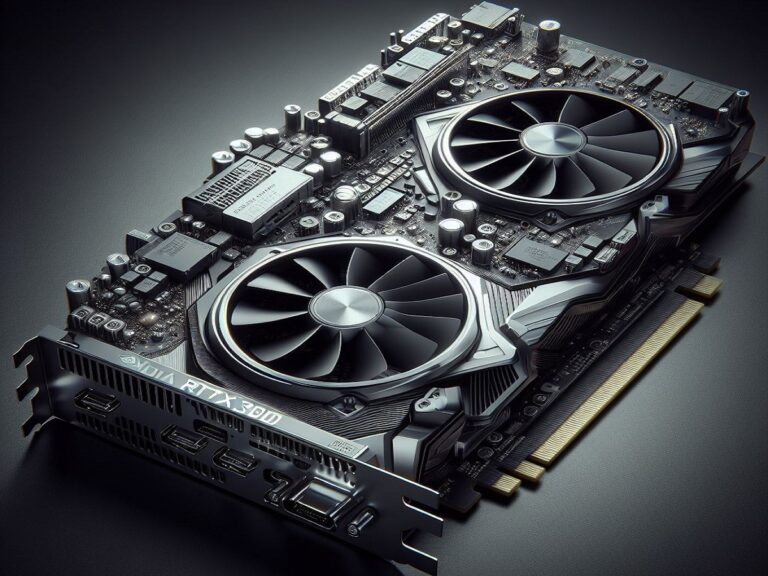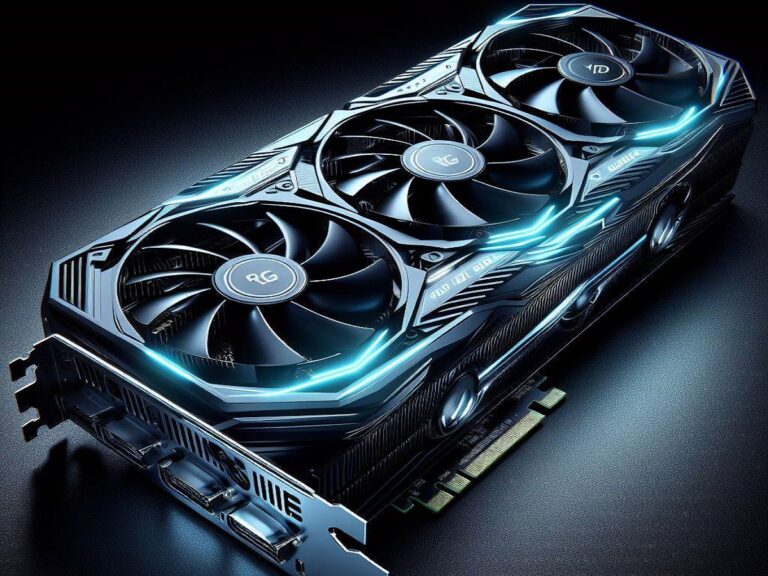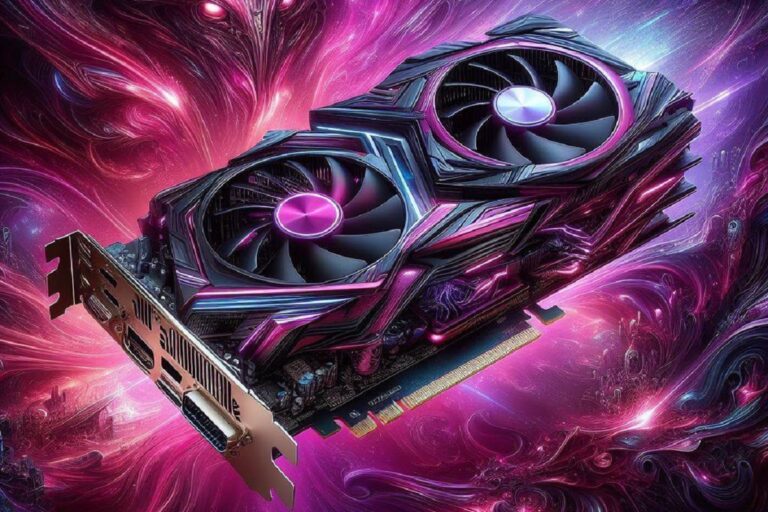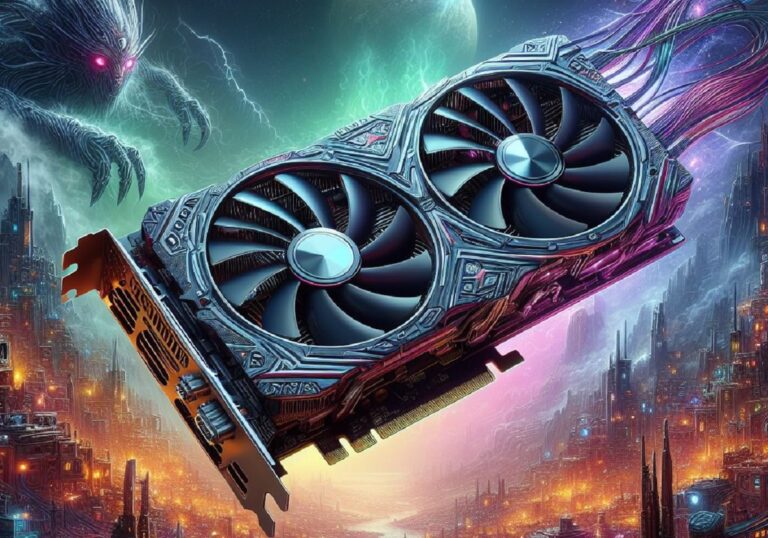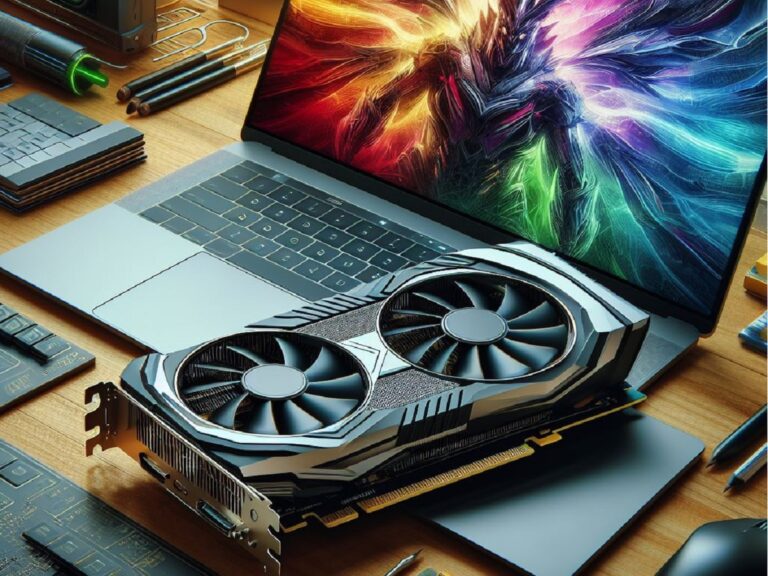Building a Hackintosh, a non-Apple computer running macOS, offers a unique blend of customization and Apple’s renowned operating system. But for a seamless Hackintosh experience, especially for visually demanding tasks, selecting the optimal graphics card (GPU) is paramount.
This comprehensive guide unveils the secrets behind choosing the perfect GPU for your Hackintosh adventure. We’ll delve into the intricacies of compatibility, explore the battle between NVIDIA and AMD, and equip you with the knowledge to navigate the ever-evolving world of macOS-compatible graphics cards.
Whether you’re a seasoned tech enthusiast or a curious newcomer, this guide empowers you to make an informed decision. By the end, you’ll be confident in selecting the ideal GPU to unlock the full potential of your Hackintosh and conquer your creative or professional workflows.
1. MSI Gaming GeForce RTX 3090 24GB GDRR6X
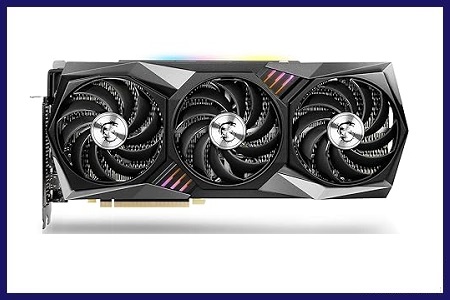
Key Features
The MSI Gaming GeForce RTX 3090 24GB GDRR6X throws down the gauntlet in the graphics card arena. Packing NVIDIA’s Ampere architecture, it delivers phenomenal frame rates for even the most demanding 8K games. The massive 24GB of GDDR6X memory lets you multitask with ease and handle enormous datasets, making it ideal for video editing and 3D rendering. MSI’s advanced cooling keeps things stable under heavy loads, preventing thermal throttling.
This powerhouse isn’t just for gamers. The immense memory makes it a dream for professionals working in machine learning and scientific computing. It supports real-time ray tracing for stunning visuals in games and design software, while NVIDIA DLSS technology boosts frame rates without sacrificing image quality for smoother high-resolution gameplay.
However, the dream comes at a hefty price. This card is an investment for serious users, and it requires a robust power supply unit (PSU) to function optimally. Its large size and weight might not fit in all cases and necessitate ample space for proper airflow.
Overall, the MSI Gaming GeForce RTX 3090 24GB GDRR6X is a phenomenal graphics card for those seeking the absolute best in gaming and professional applications. But the hefty price tag, demanding power requirements, and large size make it a niche offering for a specific audience. Before you buy, consider your budget, power supply compatibility, case size, and current market prices. It’s also important to compare it with other high-end options to ensure you’re making the best investment for your specific needs.
2. EVGA GeForce GTX 1660 SC Ultra Gaming
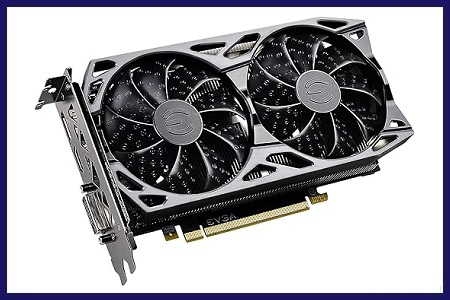
Key Features
The EVGA GeForce GTX 1660 SC Ultra Gaming carves out a compelling niche for budget-minded gamers seeking smooth 1080p performance. Let’s delve into its strengths, considerations, and how it stacks up against the competition:
Powerhouse for 1080p: This graphics card delivers consistent high frame rates in most modern games at high settings for 1080p resolution. Whether you’re into fast-paced shooters or immersive RPGs, the GTX 1660 SC Ultra provides a smooth and enjoyable gaming experience.
Memory for Modern Games: Equipped with 6GB of GDDR6 memory, this EVGA card handles most current games adequately. You can play with confidence knowing you won’t encounter stuttering due to memory limitations in most titles.
Compact Design and Efficient Cooling: The SC Ultra variant boasts a compact design that fits well in most ATX cases. EVGA’s cooling solution keeps the card running cool and quiet, even during extended gaming sessions, ensuring optimal performance without unwanted noise.
A Contender in the Mid-Range Arena: While not the most powerful card on the market, the GTX 1660 SC Ultra goes toe-to-toe with other mid-range options in its price range. It offers excellent value for gamers prioritizing 1080p performance without breaking the bank.
Consideration for Newer Titles and Higher Resolutions: If you’re aiming for ultra-high settings in the latest and most demanding games, or venturing into 1440p or higher resolutions, this card might not be the strongest contender. Consider your target resolution and desired graphical fidelity when making your choice.
Overall, the EVGA GeForce GTX 1660 SC Ultra Gaming is a solid choice for budget-conscious gamers seeking a smooth 1080p experience. Its compact size, efficient cooling, and competitive price make it a strong contender in the mid-range market. However, keep in mind its limitations at higher resolutions and demanding titles to ensure it aligns with your gaming needs.
3. MSI Gaming GeForce GT 710 2GB GDRR3
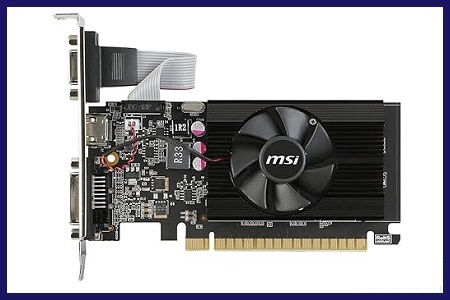
Key Features
The MSI Gaming GeForce GT 710 2GB GDRR3 carves a unique niche in the graphics card market. While not a powerhouse, it caters to users with specific needs and budget constraints. Let’s explore its pros, cons, and how it positions itself compared to other options.
An Option for Basic Needs: This card delivers sufficient performance for casual gaming at low settings and resolutions, allowing you to play older titles or less demanding esports games. It can also handle basic video playback and everyday tasks without breaking a sweat.
Affordable Entry Point: The GT 710’s biggest strength lies in its attractive price tag. It’s an excellent choice for users on a tight budget seeking a basic upgrade over integrated graphics or for building a simple media PC.
Limited Muscle: Don’t expect to run modern games at high settings or resolutions with this card. It’s better suited for casual gaming or users who prioritize other aspects of their PC experience.
Low Power Consumption: A benefit of the GT 710 is its minimal power requirements. This translates to lower energy use and potentially less strain on your power supply unit (PSU), making it suitable for budget-friendly builds.
Consider Alternatives for More Demanding Tasks: If you’re a serious gamer or require strong graphics processing for video editing or design work, the GT 710 won’t be enough. Look for more powerful mid-range or high-end graphics cards for those needs.
Overall, the MSI Gaming GeForce GT 710 2GB GDRR3 is a viable option for users on a tight budget seeking a basic upgrade for casual gaming or everyday tasks. Its affordability and low power consumption make it a good choice for specific needs. However, keep in mind its limitations for demanding applications.
4. ASUS Dual GeForce RTX 4070 Super OC Edition Graphics Card
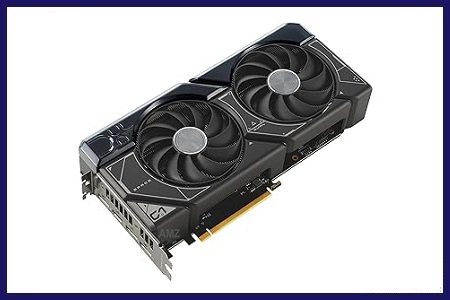
Key Features
The ASUS Dual GeForce RTX 4070 Super OC Edition graphics card positions itself as a compelling contender for gamers seeking smooth 1440p performance with the potential for venturing into 4K. Here’s a closer look at its strengths, considerations, and how it stacks up against competitors:
Powerhouse for 1440p with 4K Potential: Boasting the NVIDIA Ampere architecture and 12GB of GDDR6X memory, this ASUS card delivers excellent frame rates in most modern games at high settings for 1440p resolution. While not the absolute top tier, it can handle 4K gaming at moderate settings, offering some flexibility depending on your desired graphical fidelity.
DLSS and Ray Tracing Support: This RTX card supports NVIDIA’s DLSS technology, which boosts frame rates while maintaining image quality, allowing for smoother gameplay at higher resolutions. Additionally, it supports ray tracing, enabling realistic lighting effects for enhanced visuals in compatible games.
ASUS Cooling Solution: The ASUS Dual cooler design prioritizes efficient cooling, keeping the card operating at optimal temperatures under load. This not only maintains performance but also minimizes noise levels during gaming sessions.
Appealing Aesthetics and Compact Size: This ASUS card features a sleek design that complements most gaming PC builds. Additionally, its compact size ensures compatibility with a wider range of cases, making it easier to integrate into existing systems.
A Contender in the Mid-High Range: The RTX 4070 Super OC Edition competes effectively in the mid-high range graphics card market. It offers excellent value for gamers prioritizing 1440p performance with the possibility of exploring 4K at moderate settings.
Consideration for Budget and Cutting-Edge Performance: While attractive, the price tag might be a deciding factor for some users. Additionally, if you require the absolute best performance for high-refresh-rate 4K gaming or pushing graphical settings to the max, even more powerful options might be worth considering.
Overall, the ASUS Dual GeForce RTX 4070 Super OC Edition is a compelling choice for gamers seeking a powerful graphics card for smooth 1440p experiences with the potential for 4K gaming. Its feature set, cooling solution, and compact size make it a well-rounded option in the mid-high range market. However, weigh the price against your budget and desired performance level to ensure it aligns perfectly with your gaming needs.
5. Zotac Gaming Graphics Card GEFORCE RTX 3060
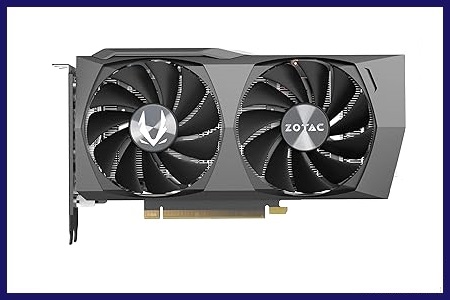
Key Features
The Zotac Gaming GeForce RTX 3060 carves a niche for gamers seeking a balance between performance and price in the mid-range graphics card market. Here’s a breakdown of its strengths, considerations, and how it stacks up against competitors:
Solid 1080p and 1440p Performance: This Zotac card delivers high frame rates in most modern games at high settings for 1080p resolution and can handle 1440p with moderate to high settings depending on the title. It strikes a good balance for users prioritizing smooth gameplay at popular resolutions.
12GB of GDDR6 Memory: The 12GB of GDDR6 memory provides ample buffer for current games and future titles with potentially higher memory requirements. This ensures smooth performance without encountering stuttering due to memory limitations.
DLSS Support for Boosted Performance: This RTX card supports NVIDIA’s DLSS technology, which significantly boosts frame rates while maintaining image quality. This allows for smoother gameplay at higher resolutions, especially beneficial for demanding titles.
Decent Ray Tracing Capabilities: While not the strongest for ray tracing, the RTX 3060 allows you to experience ray-traced visuals in select games, adding a layer of realism to lighting effects.
Zotac’s Cooling Solution: Zotac equips this card with a cooling system that maintains adequate thermals under load. This is crucial for maintaining performance and preventing overheating during extended gaming sessions.
Mid-Range Contender with Competition: The Zotac RTX 3060 sits comfortably in the mid-range market, offering excellent value for its price point. However, it’s important to compare it with other RTX 3060 options from various brands to ensure you’re getting the best features and performance for your budget.
Consideration for Budget and Cutting-Edge Performance: If you have a tighter budget, there might be GTX 16 series cards offering good 1080p performance at a lower price point. Conversely, if you require the absolute best performance for high-refresh-rate 1440p gaming or pushing ray tracing to the max, consider higher-tier RTX cards.
Overall, the Zotac Gaming GeForce RTX 3060 is a well-rounded option for gamers seeking a balance between price and performance. It delivers smooth 1080p and capable 1440p experiences, with features like DLSS and decent ray tracing for enhanced visuals. However, research current market prices and compare it with other RTX 3060 variants to ensure you get the best deal for your specific needs and budget.
FAQs
Do all graphics cards work with Hackintosh?
No, not all graphics cards are compatible with Hackintosh. Apple uses specific drivers, and some NVIDIA and most AMD GPUs tend to have better support than others.
What’s the difference between NVIDIA and AMD for Hackintosh?
NVIDIA: Generally requires more tinkering for full functionality, with newer models having limited or no support. However, they offer potentially higher performance in certain applications.
AMD: Typically enjoys better out-of-the-box compatibility, especially with recent generations. This makes them a good choice for users seeking a smoother setup process.
What are the key factors to consider when choosing a Hackintosh GPU?
Compatibility: Check online resources and forums specific to Hackintosh to ensure the card has working drivers for your desired macOS version.
Performance: Consider your needs. Do you prioritize gaming, video editing, or general use? Research the card’s performance benchmarks for your chosen tasks.
Price: Hackintosh builds can be expensive. Set a realistic budget and prioritize features most important to you.
Are there any performance drawbacks to using a Hackintosh compared to a real Mac?
There can be some potential performance drawbacks when using a Hackintosh compared to a real Mac:
Driver Optimization: Apple meticulously optimizes its hardware and software for Macs, leading to potentially smoother performance and better thermal management. Hackintosh drivers might not be as optimized, leading to slight performance dips in some scenarios.
Bootcamp and Software Compatibility: While Hackintosh can run Windows through software like Bootcamp, the experience might not be as seamless as on a real Mac. Additionally, some software designed specifically for Apple hardware might not function correctly on a Hackintosh.
However, the level of performance difference can vary depending on the specific hardware used and the tasks you perform. For many users, the cost savings and customization options of a Hackintosh outweigh the potential drawbacks.
